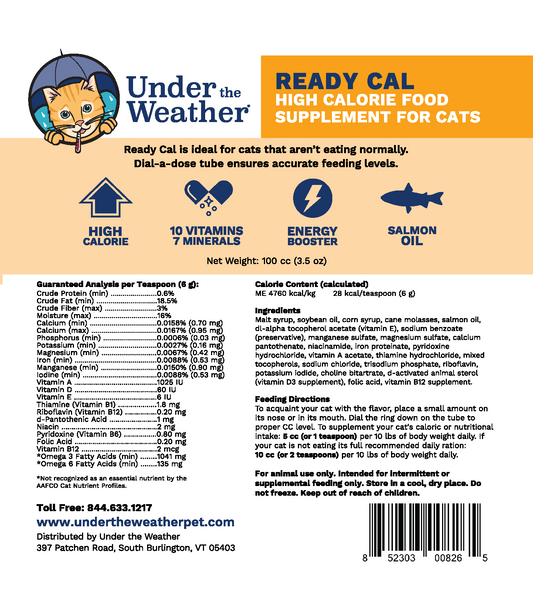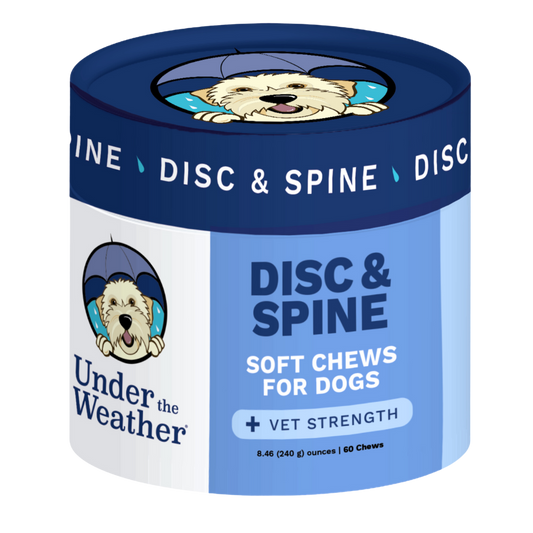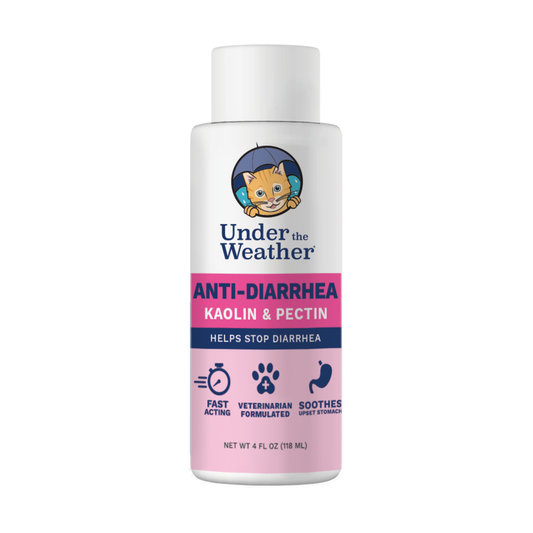Intervertebral disc disease (IVDD) is a common spinal condition in dogs that can significantly impact their quality of life and overall life expectancy. Understanding the nature of IVDD, its effect on a dog's health, and available treatment options is essential for dog owners facing this diagnosis. This article aims to provide a comprehensive guide to help dog owners navigate the challenges associated with IVDD, including managing expectations regarding their dog's life expectancy.
Understanding IVDD in Dogs
IVDD, or intervertebral disc disease, is a degenerative condition that affects the discs located between the vertebrae in a dog's spine. These discs act as cushions, absorbing shock and providing flexibility and support to the spine. However, in some dogs, these discs can become diseased or degenerate over time, leading to compression or herniation of the spinal cord.
When a dog is affected by IVDD, it can manifest in various ways depending on the severity and location of the disc degeneration. Symptoms may include back pain, reluctance to move, hunched posture, hind limb weakness or paralysis, and even loss of bladder or bowel control. Early detection and intervention are crucial in managing IVDD and preventing further complications.
Defining IVDD
IVDD is categorized into two types: Hansen type I and Hansen type II. Hansen type I, also known as acute disc extrusion, occurs when the inner gel-like material of the disc ruptures, causing it to herniate and compress the spinal cord. On the other hand, Hansen type II, also referred to as chronic disc degeneration, involves gradual disc protrusion and compression.
Diagnosis of IVDD typically involves a combination of physical examination, neurological assessment, and imaging studies such as X-rays or advanced imaging like MRI. Treatment options for IVDD range from conservative management, including rest, pain medication, and physical therapy, to surgical intervention in more severe cases where disc herniation is causing significant neurological deficits.
Causes and Risk Factors of IVDD in Dogs
While the exact causes of IVDD remain unclear, certain factors have been identified as potential contributors. Small-breed dogs, such as Dachshunds, Shih Tzus, and Beagles, are predisposed to developing IVDD due to the conformation of their vertebrae. Additionally, genetics, obesity, excessive jumping or trauma, and aging are considered risk factors for IVDD.
Genetic predisposition plays a significant role in the development of IVDD, with certain breeds exhibiting a higher incidence of the condition. The genetic component can influence the structure and composition of the intervertebral discs, making them more prone to degeneration or herniation. Environmental factors such as obesity can exacerbate the risk of IVDD by putting additional strain on the spine and discs, leading to premature degeneration.
The Impact of IVDD on a Dog's Life Expectancy
Once a dog is diagnosed with Intervertebral Disc Disease (IVDD), understanding the potential impact on their life expectancy becomes crucial. IVDD is a common condition in dogs, especially in certain breeds with genetic predispositions. The intervertebral discs act as cushions between the vertebrae in the spine, and when they degenerate or herniate, it can lead to compression of the spinal cord, causing a range of symptoms and affecting the dog's overall well-being.
Aside from the physical symptoms, IVDD can also have a significant emotional impact on both the dog and their human family members. Witnessing a beloved pet struggle with pain and mobility issues can be distressing, leading to emotional stress and anxiety for all involved.
How IVDD Affects a Dog's Health
IVDD can cause a range of symptoms, including pain, difficulty walking or standing, loss of coordination, and even paralysis. The severity of these symptoms depends on the extent and location of spinal cord compression, as well as the individual dog's overall health and resilience. In some cases, dogs may require emergency surgery to alleviate the compression and prevent further damage to the spinal cord.
Rehabilitation and physical therapy are also crucial components of managing IVDD in dogs. These interventions can help improve mobility, reduce pain, and enhance the dog's quality of life during the recovery process. Pet owners need to work closely with their veterinarian to develop a comprehensive treatment plan tailored to their dog's specific needs.
Factors Influencing Life Expectancy in Dogs with IVDD
Several factors contribute to the life expectancy of dogs with IVDD. The type and severity of IVDD, the location of the affected disc(s), the age and overall health of the dog, and the chosen treatment approach all play a role in determining an individual dog's prognosis. Regular veterinary monitoring and proactive management of the condition can help improve outcomes and potentially extend the dog's life expectancy.
Pet owners should educate themselves about IVDD, including its symptoms, treatment options, and long-term management strategies. By staying informed and actively participating in their dog's care, owners can provide the best possible support for their furry companion throughout the challenges posed by IVDD.
Diagnosing IVDD in Dogs
Early and accurate diagnosis of Intervertebral Disc Disease (IVDD) is crucial for implementing appropriate treatment and management strategies. Familiarizing oneself with the symptoms of IVDD and the diagnostic procedures used can aid in promptly addressing this condition.
IVDD is a common spinal condition in dogs, particularly in certain breeds with genetic predispositions. The intervertebral discs act as cushions between the vertebrae, but in IVDD, these discs can degenerate or herniate, leading to compression of the spinal cord and nerves.
Symptoms of IVDD in Dogs
The symptoms of IVDD can vary depending on the affected area of the spine. They may include reluctance to move, weakness or paralysis in the hind legs, sensitivity to touch or movement, hunched back, and overall signs of pain or discomfort. It's important to note that not all dogs with IVDD will exhibit the same symptoms.
In some cases, dogs with IVDD may also experience bladder or bowel incontinence due to the impact of the condition on the nerves controlling these functions. This can be a severe complication and requires immediate veterinary attention.
Diagnostic Procedures for IVDD
Veterinarians use various diagnostic procedures to confirm an IVDD diagnosis. These may include a thorough physical examination, neurological assessment, and imaging techniques such as X-rays, CT scans, or MRI scans. These tests help identify the location, severity, and overall impact of IVDD on the dog's spinal cord.
Additionally, a myelogram, where a contrast dye is injected into the spinal canal followed by imaging, can provide detailed information about the extent of spinal cord compression. This procedure is particularly useful in surgical planning for severe cases of IVDD.
Treatment Options for Dogs with Intervertebral Disc Disease (IVDD)
Intervertebral Disc Disease (IVDD) is a common condition in dogs that affects the spinal discs, leading to pain, inflammation, and mobility issues. The treatment of IVDD is crucial in alleviating discomfort, reducing inflammation, and enhancing the overall quality of life for affected dogs. Treatment plans are tailored to each individual dog, taking into account the severity of the condition, the dog's overall health, and the preferences of the owner.
When dealing with IVDD, it is essential to explore both non-surgical and surgical treatment options to determine the most suitable course of action for the affected dog.
Non-Surgical Treatments for IVDD
Non-surgical treatments are often the initial approach for managing IVDD, especially in cases where surgery may not be feasible or immediately necessary. These non-invasive treatment options may include strict crate rest to limit movement and prevent further damage, physical therapy to strengthen muscles and improve flexibility, pain management medications to alleviate discomfort, anti-inflammatory drugs to reduce swelling, and alternative therapies like acupuncture or chiropractic care to complement traditional treatments.
Physical therapy plays a crucial role in the rehabilitation process for dogs with IVDD, as it helps improve muscle strength, range of motion, and overall mobility. Additionally, alternative therapies such as acupuncture and chiropractic care can provide additional pain relief and support the dog's healing journey.
Surgical Treatments for IVDD
In cases where the severity of IVDD necessitates surgical intervention, various surgical procedures may be considered to address the underlying spinal issues. Surgical treatments aim to decompress the spinal cord, remove herniated disc material, and stabilize the affected area of the spine to prevent further damage and improve the dog's quality of life. Common surgical options for IVDD include hemilaminectomy, dorsal laminectomy, and fenestration, each tailored to the specific needs of the individual dog.
Surgical intervention for IVDD is often recommended for dogs with severe symptoms or neurological deficits, as it can provide significant relief and improve the chances of a successful recovery. Pet owners need to consult with a veterinary specialist to determine the most appropriate treatment plan for their dog's specific condition.
Living with a Dog with IVDD
After diagnosis and treatment, it's important for dog owners to learn how best to support their canine companions with IVDD. Making necessary lifestyle adjustments and providing proper care can help ensure the best possible outcome for dogs with this condition.

Managing a Dog's Lifestyle Post-IVDD Diagnosis
Following an IVDD diagnosis, maintaining a controlled and supportive environment becomes crucial. This may involve preventing excessive or strenuous physical activity, providing a comfortable and supportive bed, assisting with manual expressions of the bladder and bowels if necessary, and monitoring the dog for any signs of pain or worsening symptoms.
Creating a safe and secure space for the dog is essential in preventing further injury or aggravation of the condition. This can include using baby gates to restrict access to stairs or other areas that may pose a risk, removing any potential hazards such as slippery rugs or sharp objects, and ensuring that the dog's living area is free from clutter.
Support and Care for Dogs with IVDD
Dogs with IVDD require ongoing support and care to manage their condition effectively. Regular veterinary check-ups, appropriate pain management, maintaining a healthy weight, and monitoring for any changes or new symptoms are essential in optimizing their quality of life.
During veterinary check-ups, the veterinarian may perform a thorough physical examination to assess the dog's neurological function and overall health. They may also recommend diagnostic tests such as X-rays or MRI scans to evaluate the extent of the spinal cord compression and determine the most appropriate treatment plan.
Pain management is a crucial aspect of caring for a dog with IVDD. Depending on the severity of the condition, the veterinarian may prescribe pain medication or recommend alternative therapies such as acupuncture or physical therapy to alleviate discomfort and improve mobility.
Furthermore, maintaining a healthy weight is essential for dogs with IVDD, as excess weight can put additional strain on the spine. The veterinarian may provide expert guidance on appropriate portion sizes and recommend a balanced diet to help the dog maintain a healthy body condition.
Lastly, monitoring for any changes or new symptoms is vital in detecting any potential complications or disease progression. Dog owners should be vigilant in observing their pet's behavior, mobility, and urinary and bowel habits. Any sudden changes should be reported to the veterinarian promptly for further evaluation and appropriate management.
Conclusion
Intervertebral disc disease is not the diagnosis that a dog owner hopes to hear regarding their beloved pet. However, with careful monitoring, a solid treatment plan, and thoughtful care, a dog with IVDD can enjoy a long and happy life in your loving home. Under the Weather has a host of products designed bring your pup comfort as part of a comprehensive approach to your dog’s well-being.












